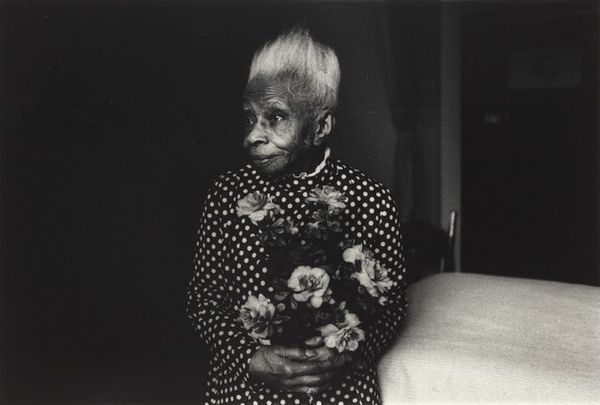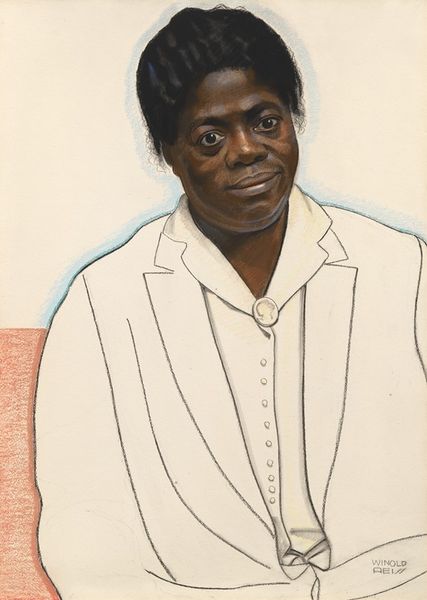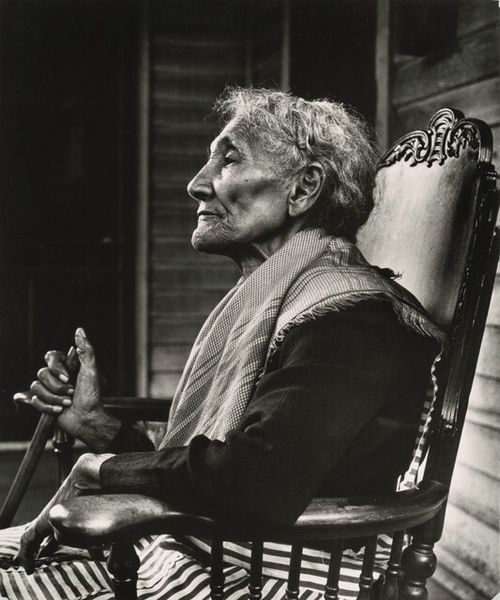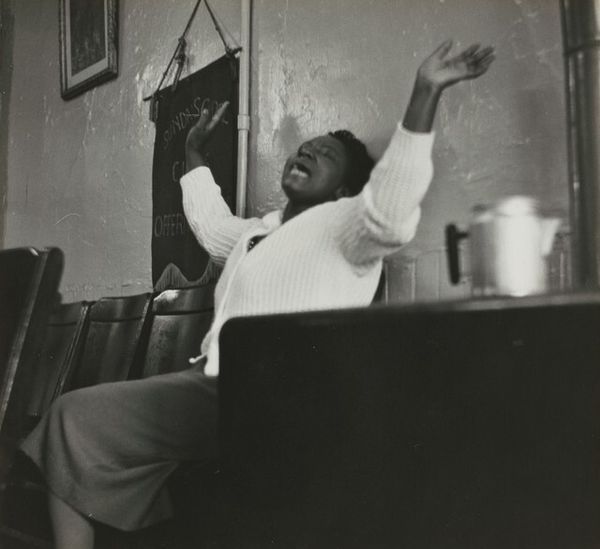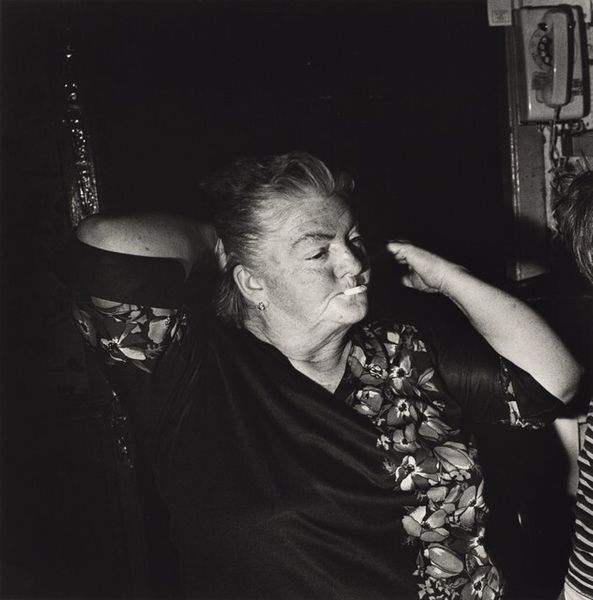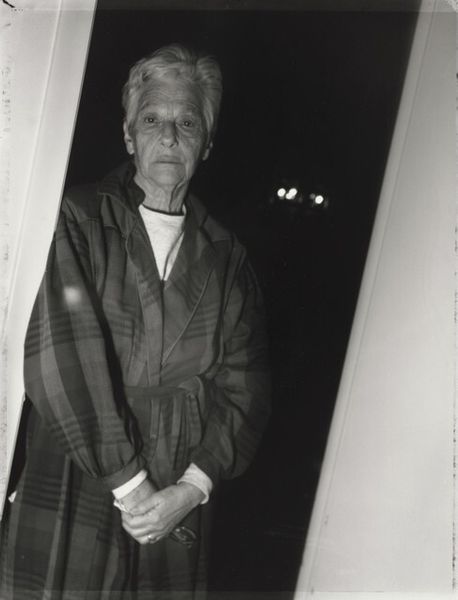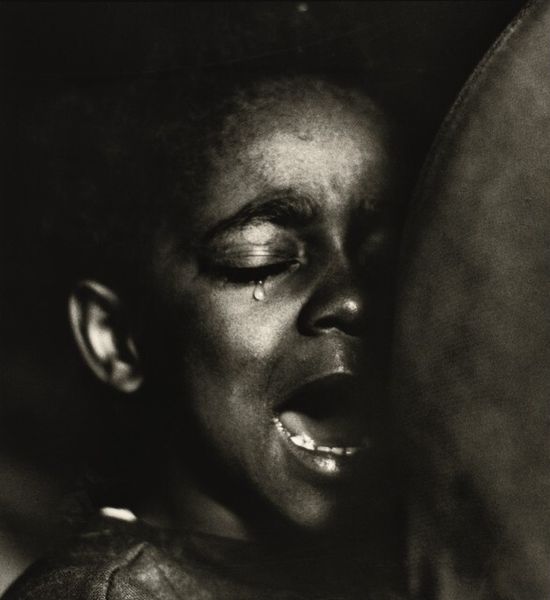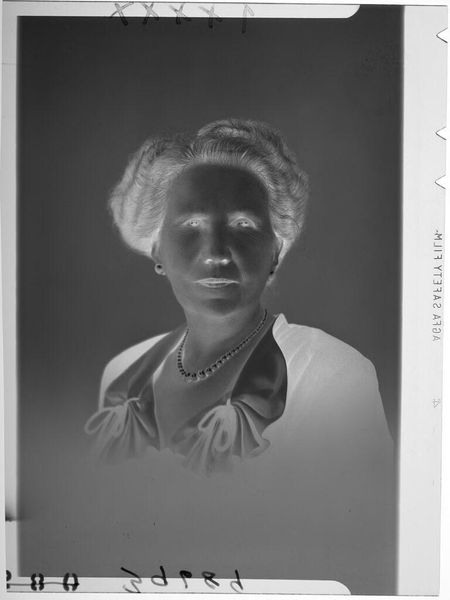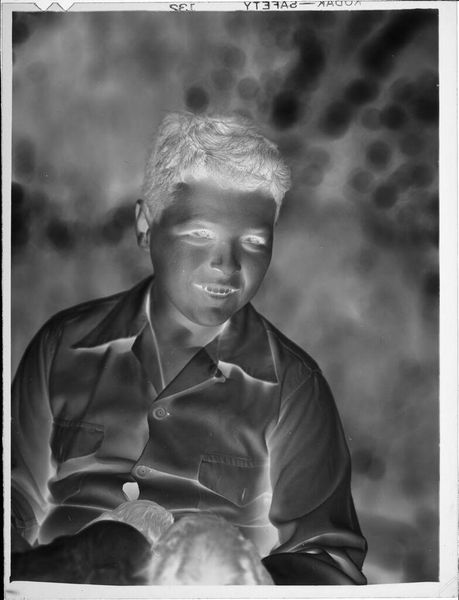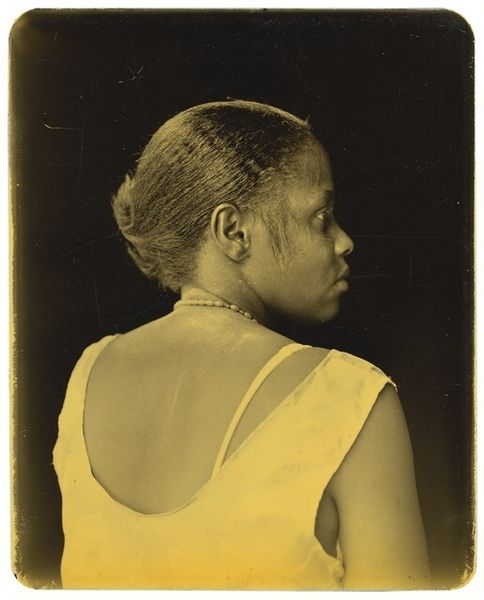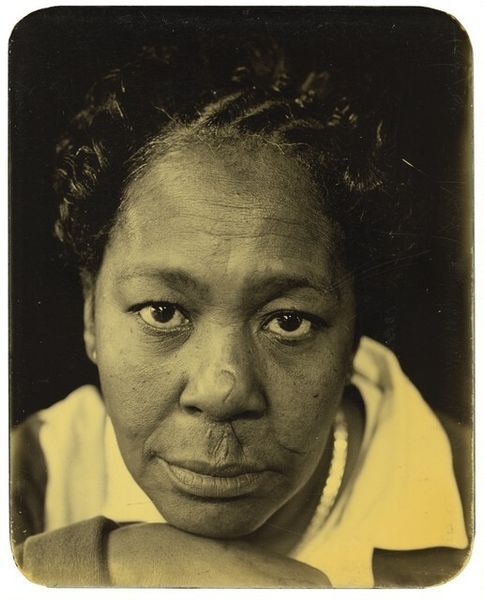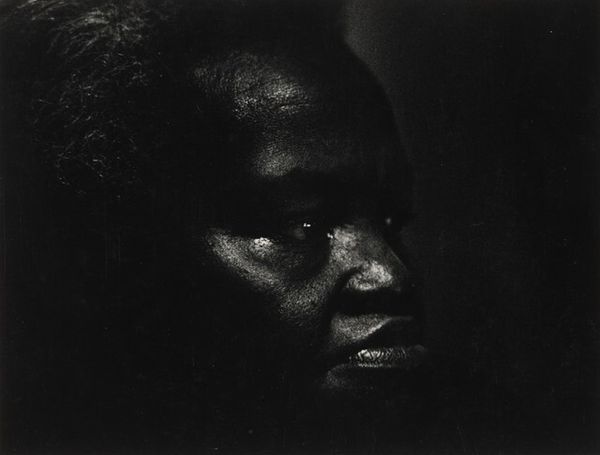
photography, gelatin-silver-print
#
portrait
#
contemporary
#
portrait
#
social-realism
#
photography
#
black and white
#
gelatin-silver-print
#
ashcan-school
#
realism
Dimensions: image: 22.8 x 11.3 cm (9 x 4 7/16 in.) mount: 30.3 x 25.2 cm (11 15/16 x 9 15/16 in.)
Copyright: National Gallery of Art: CC0 1.0
Curator: Let’s discuss this striking gelatin silver print, simply titled "Untitled (Storefront Churches series)" by Milton Rogovin, created around 1960. It’s part of a larger body of work. Editor: My first impression is one of raw intimacy. The stark black and white, the angle of the woman's face, bathed in light from above – it’s as if we’re intruding on a deeply personal moment. The contrast emphasizes texture, particularly in the sitter's hair. Curator: Absolutely. The upward tilt invites us into a space of reverence or intense emotion. Note the symbolic power of that single, exposed lightbulb above, the single source of light here: it serves almost as a halo. This piece, from his "Storefront Churches" series, highlights Rogovin's commitment to documenting the spiritual and cultural landscape of marginalized communities. Editor: And let's not forget the socio-economic implications. Storefront churches often arise in communities lacking resources. They’re born out of necessity, and function simultaneously as places of worship and community hubs, far removed from ornate architecture or expensive materials. Rogovin's choice of photography emphasizes its accessibility as a medium; mass production meets an artistic record. Curator: Indeed, this connects back to Rogovin's social realism. He deliberately turned his lens toward the unsung and invisible in society, recognizing the value in the lives and rituals of everyday people. Editor: I'm also struck by the visible grain of the print, the trace of the making. It’s not slick or polished. You feel the hand of the artist, the labor of production. That tactility underscores the genuineness of the scene – no glamour, no artifice. The means speak for themselves. Curator: I agree. By documenting these churches, Rogovin captured fragments of Black religious experience often missing from mainstream historical narratives. In terms of material culture, the photograph is evidence of spaces created despite the lack of resources, underlining the indomitable spiritual expression. It’s about visibility and agency. Editor: It feels revolutionary in its quiet way. Makes you wonder about access. Where does one focus their energy in their limited timeframe? He turned his focus away from larger institutions in favour of smaller stories, but one could claim those in bigger positions need that level of material scrutiny. Curator: Well, the power of visual witness remains, all the same. Editor: And to what do we devote our energy now? It's a compelling challenge Rogovin leaves behind.
Comments
No comments
Be the first to comment and join the conversation on the ultimate creative platform.
